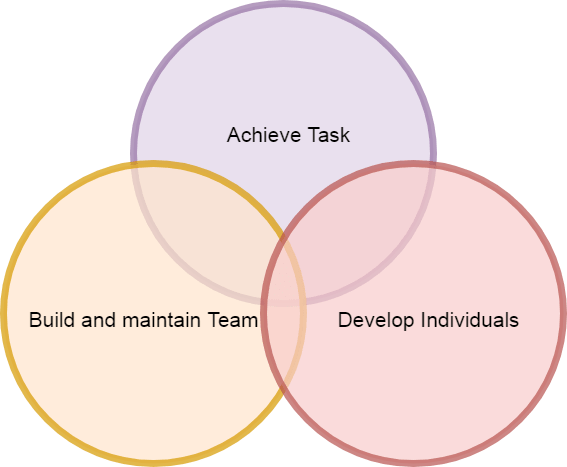Effective action centred Leadership. Do you want to know what it is? First, you know what is leadership. Then you must know what action-centred leadership is.
“Leadership is the art of influencing others to their maximum performance to accomplish any task, objective or project.”
–W.A. Cohen.
How does a leader influence others? He unleashes the energy, builds a team from a group of people, maintains it and inspires them to give their best to accomplish the common objective.
Effective leadership makes a high performing team who achieves the above common objective. What is the objective? Now how to define it?
Defining the objective for effective leadership
The story of two friends can help you to understand the importance of defining the objective. The two friends took their rifles and went to the forest for the purpose of hunting. They were very much alert all the time. All of a sudden both of them heard the roar of a tiger. At once, the first friend started running. After a few minutes of running, he discovered that the other friend was not running behind him. Rather he found him to tighten his shoelaces. But, the first friend came to him and said, ” Are you mad? Why don’t you run? The tiger may come at any time.” The second friend said,” I know that I can’t compete with the tiger. But I can compete with you. I can run faster than you if I tighten my shoelaces. As a result, the tiger can’t reach me first. ”
The second friend was very much clear about his objective. If you analyse his objective, then you can have the following generic idea. The objective must be
- Specific (simple, sensible, significant)
- Measurable (meaningful, motivating)
- Achievable (agreed, attainable)
- Relevant (reasonable, realistic and resourced, results-based)
- Time-bound (time-based, time-limited, time/cost limited, timely, time-sensitive)
Three circles model
When you want to become an effective leader, then you must carry out these leadership responsibilities.
- Achieve the task.
- Build and maintain a team.
- Develop individuals.
These areas of responsibilities may be shown in three interacting circles given below.
The top circle of the task is the tip of the iceberg. Everyone in the workplace can see whether the task has been done or not. The activities within two bottom circles of team and individuals are not easily visible. These are the hidden responsibilities of any leadership.
A leader becomes effective only when he performs the above responsibilities effectively. When you do these activities effectively, you become an action centred leader who can bring results.
How circles vary in sizes
The three circles model can clarify the basic concepts of action centred leadership. The first circle focuses on the task, the second one on building and maintaining team and finally, the third one on the development of individuals.
If you can’t lead your team successfully, the team spirit goes down. As a result, individuals fail to develop themselves within the team. Then they fail to achieve the task in time and quality.
When you focus more on the task, then the first circle increases its size. You work more for the results, not for the team-building and team maintenance as well as not for the development of individual team member. Every one labels you as a taskmaster.
When you pay more attention to make and maintain a team, then you focus more on team-building activities. So the size of the concerned circle increases. Then you don’t focus much on the task. In the end, you become a popular leader giving no results. Do you want it? Certainly, not. So how to be effective?
Conclusion
If you want to be an effective action centred leader, change the size of the circles according to the situation. In an emergency, focus more on the top circle and become a taskmaster. In a normal situation, focus equally on each circle and improve your leadership.
So what is your leadership style? Can you use this in your personal life?